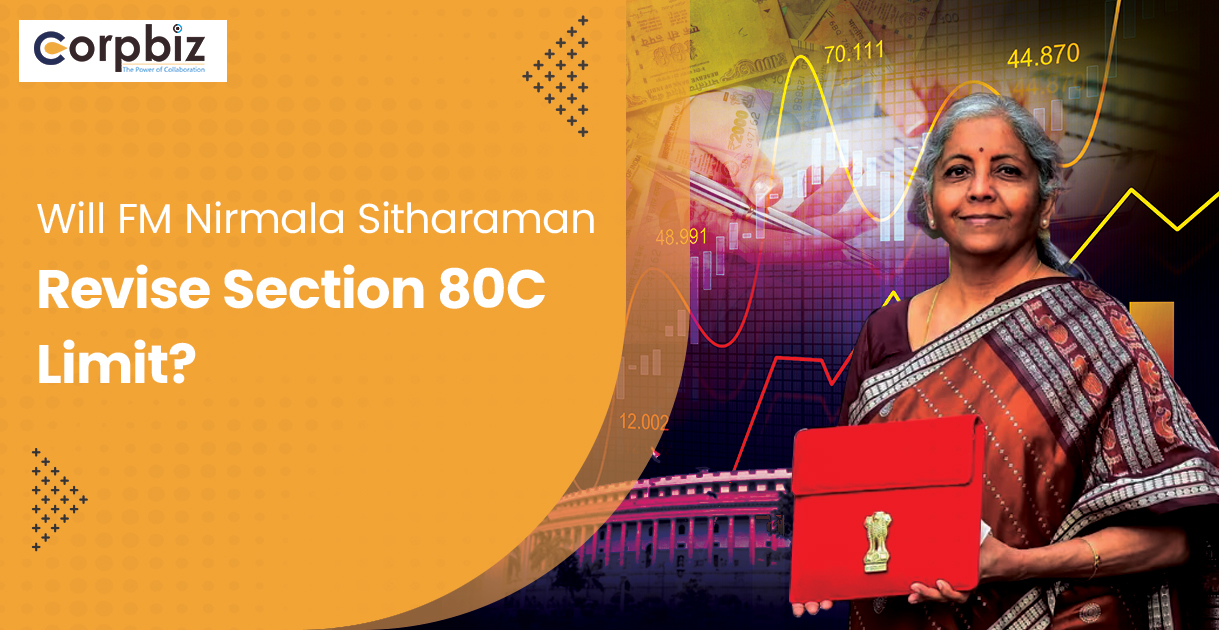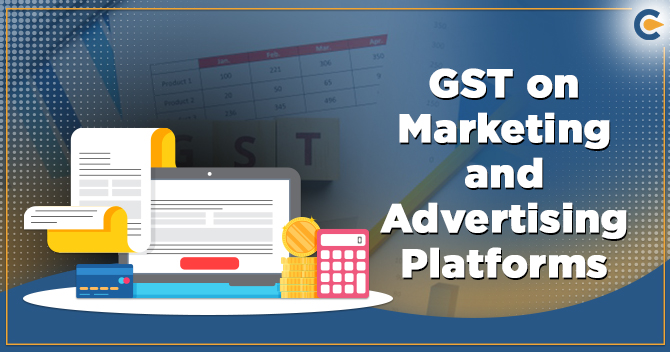The Budget Bill is usually presented around March every year. However, this year because of the elections, an interim budget was presented in February 2024 for the time being. On 23rd July 2024, the Union Budget will be announced for the financial year 2024-2025, which will be laid on the foundation of the Viksit Bharat. Since it is just after the elections, it will have an impact on the same.
The interim budget will also help to speculate on the coming budget. It is pertinent to understand the last budget, the interim budget as well as the impact of the elections to analyse what can be expected from the coming budget.
One of the most important changes that one would look forward to is the revision of Section 80C. Mr. Arun Jaitley had increased the 80C limit to 1.5 lakhs in the year 2014. It has been 10 years since this revision, and the citizens are looking forward to a Rupees Fifty Thousand increase in the same. This article attempts to speculate on the government’s move on the revision of 80C limit with an analysis of several factors affecting it.
Understanding Section 80C
Section 80C of the Income Tax Act, 1961 is one of the widely used and known provisions. It was introduced in 2005 and applies to individuals and Hindu Undivided Families. It sets a provision that certain deposits or payments made by an individual or HUF will be deducted in assessing the total income of the individual or HUF but will not exceed the amount of One Lakh Fifty Thousand Rupees.
To understand it more well, if a person is earning Seven Lakh Fifty Thousand rupees a year, and makes certain deposits or payments as mentioned in section 80C, and if they amount to Two Lakh Rupees, then the actual income that will be considered of that person is Five Lakh Rupees only.
When filing ITR in India, taxpayers can reduce their taxable income by claiming deductions under Section 80C of the Income Tax Act.
What are the benefits of it? For this, we need to see the current tax slab.
| Income | Rate |
| Upto Rs. 3 lakhs | Nil |
| Rs. 3 lakhs – 6 lakhs | 5% |
| Rs. 6 lakhs – 9 lakhs | 10% |
| Rs. 9 lakhs – 12 lakhs | 15% |
| Rs. 12 lakhs- 15 lakhs | 20% |
| Rs. 15 lakhs and above | 30% |
As one can see, the above example lies under the 6-9 lakhs tax slab. However, because the person making certain deposits and payments coming under Section 80C, Rupees One Lakh Fifty thousand will be deducted from his total annual income and hence he would come under the 3-9 lakhs tax slab. This means that without this provision he was liable to pay 10 percent income tax but now he will have to pay just 5 percent.
But which are these instruments that make one eligible for such a deduction? These are as follows:
1. Equity Linked Saving Scheme (ELSS)
2. National Pension Scheme (NPS)
3. Unit Linked Insurance Plan (ULIP)
4. Public Provident Fund (PPF)
5. Sukanya Samriddhi Yojana (SSY)
6. National Savings Certificate (NSC)
7. Fixed Deposit (FD)
8. Employee Provident Fund (EPF)
Any individual or HUF can deposit or make payments under any of these instruments and can benefit from Section 80C.
Potential Reasons for Revising the Section 80C Limit
There are several factors because of which there is a high chance that the government will reconsider increasing the 80C limit. Those can be understood under the following heads:
- Inflation and Cost of Living
The impact of inflation is one of the primary reasons why the 80C revision will be reconsidered. The cost of living has surged immensely over the past decade. Housing, education, healthcare, and day-to-day expenses are hard to meet for middle-class families, which form the majority of the population.
The purchasing power of the average taxpayer has diminished drastically. An increase in the limit under 80C will bring relief to several honest taxpayers in India.
2. Encouraging Long-term Investments:
Section 80C promotes long-term investments. It encourages investments in PPF, EPF, and ELSS. This not only develops a culture of long-term saving and investing among the citizens but also creates a pool of funds with the Government. These instruments have a lock-in period ranging from 3 to 15 years, which ensures stable funds with the government.
This will also create positive ripples in the economy. Increasing the deduction limit will incentivize many citizens to invest in these long-term instruments.
3. Boosting the Insurance Sector:
Since the COVID-19 pandemic, the importance of health and life insurance has increased. The insurance sector plays a vital role in bringing security to the citizens. An increase in the deduction under 80C will encourage people to invest in Life Insurance as it is one of the instruments under Section 80C.
Economic Implications
Impact on Tax revenue
One of the primary concerns while considering this revision is the loss of revenue for the government. The deduction in the taxes will directly reduce the taxable income. This will lead to a lower overall collection of taxes. However, it is pertinent to note that the people paying taxes in India are just 2.2% of the total voting population.
It is essential to understand that there are reforms needed to expand the tax base and also make the tax payment procedure simple for the citizens. Although tax reduction is an issue, long-term investments and savings can drive economic growth and bring stability.
Stimulating Economic Growth
Higher investments in long-term savings instruments can provide a steady flow of capital for various sectors, including infrastructure, real estate, and the stock market. It will help in funding several development projects.
There will be an increase in job opportunities and the overall economic growth will be boosted by this. Additionally, if people have long-term savings, it will immune them from future economic downturns.
Enhancing Financial Inclusion
The raising of the 80C limit will help to bring many citizens under the formal financial system. Investing in PPF, EPF or life insurance will not only help in securing their futures but will also develop their financial literacy.
Economic Survey 2022-23 Insights
Before understanding the Last year’s budget, it is important to understand the data on which it was based. What did it project, and accordingly, what were the steps taken by the government in its Union budget? The key insights to the survey are as follows:
GDP Growth:
The survey projected a growth in GDP of 6.5 % for the 2024 financial year; this growth will be majorly backed by the manufacturing and service sectors of the country.
Inflation:
Due to the Russia-Ukraine war, in the first phase between January to April, the inflation peaked at 7.8%. Later, the government managed to bring it to 5.7 %. However, this brought attention to the need for measures to manage the cost of living like potential tax reliefs.
Fiscal Deficit:
It projected a Fiscal deficit of 6.4% of the GDP, which indicated a need for fiscal consolidation while maintaining growth-supportive expenditure.
Savings Rate:
The National Account Statistics 2024 projected that the net household savings dipped to a five-year low of Rs. 14.15 lakh crores in 2022-23. This highlighted an urgent need to incentivize savings by measures such as 80C.
The Economic Survey 2022-23 highlighted the need to boost household savings and long-term investments. It called for measures like 80C. However, certain measures were taken by the government which can be seen in the Union Budget 2023-24. Given the inflationary pressures and rising cost of living, the survey underscored the importance of revising tax incentives to encourage savings.
Union Budget 2023-24 Analysis
Before moving to analyse several factors that might influence the revision of 80C, it is important to have an insight into the previous year’s budget and what it did to enhance the disposable income of the citizens.
Key Highlights
The main focus of the Union Budget 2023-24 was on infrastructure development, healthcare, and digital transformation. The key highlights of the budget can be summarised as follows:
Capital Expenditure:
The capital expenditure was allocated a whooping Rupees ten lakh crore by this annual budget, which marked an increase of 33% from the previous year’s budget. This budget aimed to bolster infrastructure projects across the country like building roads, railways, and urban infrastructure.
Healthcare:
Healthcare was allocated around Rupees Eighty Thousand Crores which reflects the focus of the government to enhance the healthcare sector. The Pradhan Mantri Jan Arogya Yojana, Pradhan Mantri Ayushman Bharat Health Infrastructure Mission, and National Health Mission were some of the programs that benefited from this fund.
Education:
Around Rupees One lakh crore was granted to the education sector which primarily focused on skill development and digitalisation of education. There was a 13% increase in funds from the previous year to this sector. The Samagra Shiksha Abhiyan became the major beneficiary of this fund.
Agriculture:
The agriculture sector received around One Lakh crores of funds which focused on supporting small and marginal farmers. It also emphasised irrigation projects and the development of the agri-tech infrastructure.
The digital economy and promotion of digital payments were also on focus. Despite these settings, the limit of 80C was not increased, which faced certain criticisms. However, an attempt was made to increase the disposable income and savings of the population:
Income Tax Slab:
There was a revision of the Income tax slab where the payment of income tax started from 3 lakhs, unlike 2.5 lakhs which was in the previous year. This was a relief to the people belonging to lower-income groups.
Interim Budget
An Interim Budget was presented before the Parliament on February 1, 2024, which would act temporarily considering the elections. The final budget is to be presented on 23rd July 2024. However, it is important to study this interim budget as it will be incorporated into the final budget as well and gives an insight into the planning of the government, following are its key points:
- It is estimated that the government expenditure will be around Rupees Forty-seven lakh Crores in the year 2024-25. This indicates an increase of 6% over the revised estimate of 2023-24.
- Revenue Expenditure is estimated to grow at 3.2 %. It has been kept in check considering the pensions, defence expenditure, subsidies, and major schemes like MGNREGS, Jal Jeevan mission, and PM KISAN yojana. These programs are roughly allotted the same as the revised estimate for 2023-24. The capital expenditure is estimated at a growth of 16.9%.
- The Government Receipts are estimated to be 11.8% higher than the revised estimates of 2023-24. The gap between the receipts and the expenditure is to be plugged by the borrowings, which will be 2.8% lower than the revised estimate of 2023-24.
- The government is targeting a 2% deficit, which is lower than the 2.9% in the revised estimate for 2023-24.
- There will be an 8.4% increase in the revised estimates of 2023-24 in the allocation of funds to states and union territories.
- GDP is estimated to grow at 10.5% in this fiscal year of 2024-25.
Impact of Recent Lok Sabha Elections
Election Outcome
The recent Lok Sabha elections resulted in a weak mandate for the ruling party, which compelled the party to introspect their policies.
Grievances of the People
The rising cost of living was a significant concern of the electorate, and it was projected through this election. Inflation driving up the prices of essential goods and services and straining household budgets were the major areas of concern.
Health care costs, taxes on education, ever-increasing housing prices and utility bills, as well as a decline in the disposable income of the electorates were the grievances that echoed loudly in the recent elections. Cognizant of these issues, there is a high chance that the government might consider revising the increase in the 80C limit.
Implications for Tax Policy
Increasing the Section 80C limit could be seen as a direct response to the grievances of the electorate as well as the diminishing net household savings. It might prove a strategic move to gain the support of the middle class and stimulate economic growth.
Possible Scenarios
Several possible scenarios might happen concerning the present budget presentation.
Incremental increase
There is a chance that the limit under 80C will be increased to 2 lakhs or even more, considering the present grievances of the people and the stagnant limit for 10 years.
Comprehensive Overhaul
There is a chance that with the increase in the limit, the government might also add some other eligible instruments or reclassify the present one.
Status Quo
One cannot deny the chances of a status quo considering the accumulation policy of the government which is seen from the past few years taking into account the changing dynamics of international politics and certain confidential apprehensions.
Conclusion
The question of whether Finance Minister Nirmala Sitharaman will revise Section 80C Limit is multifaceted, with several factors influencing it, including economic, political, and social factors. There is a high chance that the government might consider increasing the limit. However, they may have their own apprehensions for not doing the same.
The Union Budget 2024-25 is long-awaited, and the citizens are hoping for relief and surprises from the same.
Frequently Asked Questions
Will the 80C limit increase in 2024?
Considering several economic and political factors, the 80C limit is likely to be raised in the Union Budget of 2024-25.
What is the budget date of 2024?
The Union Budget 2024 is going to be presented on 23rd July 2024.
What happens if 80C exceeds 1.5 lakh?
If the 80C limit exceeds 1.5 lakhs, disposable income will increase among citizens of India. Disposable income is the income left after deduction of all the taxes.
What comes under 80C?
The instruments that come under 80C are as follows:
– Equity Linked Saving Scheme (ELSS)
– National Pension Scheme (NPS)
– Unit Linked Insurance Plan (ULIP)
– Public Provident Fund (PPF)
– Sukanya Samriddhi Yojana (SSY)
– National Savings Certificate (NSC)
– Fixed Deposit (FD)
– Employee Provident Fund (EPF)Can I declare more than 150000 in 80C?
You can only claim a deduction on your income of about One Lakh Fifty Thousand Rupees as per Section 80C of The Income Tax Act, 1961.
Read our article : Income Tax Slab Rates For 2024











